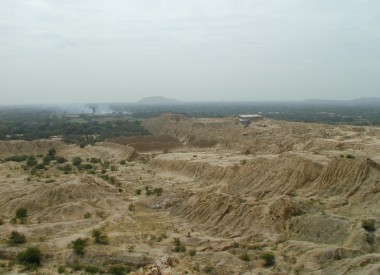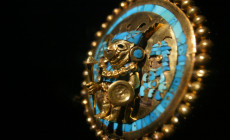-
Latin America
Latin America
- Countries (hidden space)
- Galapagos & Ecuador
- Guatemala
- Mexico
- Panama
- Peru
- Popular Attractions
- Machu Picchu
- Inca Trail
- Easter Island
- Galapagos Islands
- Patagonia
- Rio de Janeiro
- Iguazu Falls
-
Africa
Africa
- Spacer Africa
- South Africa
- Zimbabwe
- Popular Attractions
- Cape Town
- Okavango Delta
- Sossusvlei Dunes
- Victoria Falls
- The Kruger
- The Garden Route
- Masai Mara
-
Asia & Middle East
Asia & Middle East
- Asia
- Borneo (Malaysia)
- Cambodia
- India
- Japan
- Middle East
- Jordan
- Spacer Asia
- Laos
- Sri Lanka
- Uzbekistan
- Vietnam
- Popular Attractions
- Taj Mahal
- Lion Rock (Sigiriya)
- Angkor Wat
- Ha Long Bay
- Kyoto
- Petra
-
Destinations
- Latin America
- Argentina
- Bolivia
- Brazil
- Chile
- Colombia
- Costa Rica
- Galapagos & Ecuador
- Guatemala
- Mexico
- Panama
- Peru
- Asia
- Borneo (Malaysia)
- Cambodia
- India
- Japan
- Laos
- Sri Lanka
- Uzbekistan
- Vietnam
- Middle East
- Jordan
- Southern & East Africa
- Botswana
- Kenya
- Namibia
- South Africa
- Zimbabwe
- Contact Us
-
About
About
Llama Travel provides high quality holidays at the lowest possible prices.
99% recommend us Lower prices - guaranteed Financially protected by ATOL
The area around Chiclayo is one of the most archaeologically important in the world, containing the fascinating sites of Sipán, Túcume and Sicán.
Túcume
33km from Chiclayo is Túcume, one of the most important sites of the Lambayeque culture, which was later occupied by the Chimú and Inca cultures. The Lambayeque culture was active in the region between Piura and Chicama between 700AD until its conquest by the Chimú culture in 1375AD. In Túcume, there are 26 pyramids spread over 200 hectares, the largest of which, Huaca Larga, is claimed by some to be the largest adobe structure ever constructed, measuring 700m by 280m, and being 30m high. The site was founded around 1000AD in the Lambayeque classical period, and became the main centre for the culture when floods destroyed Sicán around 1100AD. As it was the main centre in the region, it was used as an administrative centre when it was conquered by the Chimú people around 1400 and again by the Incas in 1470.
There are many important temples in the complex, including the Templo de la Piedra Sagrada, a religious compound possibly used for human sacrifices, and the Huaca de las Balsas, where decorations similar to those at Chan Chán have been discovered.
The site is very impressive, although most of the huacas now resemble little more than giant sand dunes. However, climbing to the top of the mirador on the Cerro La Raya affords a wonderful view over the entire area, and imagining what the city must have been like is awe-inspiring. It is possible to walk round the entire site, and visit some of the sites that are under excavation. In the past, the site had been under investigation by a team led by the Norwegian archaeologist Thor Heyerdahl.
There is a small museum at the site, which includes a scale model of Túcume and an explanation of the excavations of the different huacas. There are also some ceramics and jewellery that were found at the site. Near the site is a small Algarobo forest that is good for bird watching.
Sicán (Batán Grande)
Sicán, also known as Batán Grande, was an important city for the Lambayeque culture, and many important tombs have been found here. The town was the main centre for the Lambayeque people from 700AD until it was largely destroyed by floods in 1100AD, when the people moved to Túcume. Many of the remains show signs of damage by fire, and it is likely that the inhabitants burnt down the city upon abandoning it. The site contains many huacas, and there are many tombs of important nobles. Many of these have, unfortunately, been looted, although the few pieces recovered and on display in the Museo Brüning, indicate the wealth of the culture. Many of the pieces in the Gold Museum in Lima, including the famous Golden Tumi, are from Sicán, and were bought from tomb robbers.
In 1991, Izumi Shimada, a Japanese archaeologist working at the site discovered an important, unlooted tomb of a Lambayeque leader, who he named the Señor de Sicán. In the tomb were many important gold, silver and copper pieces, including a fabulous gold facemask and a gold crown. An interesting aspect of the tomb was that the skeletons were facing west instead of east to the rising sun, as is found in almost all tombs in Peru. One possible explanation of this is that the bodies were looking towards the Pacific from where Naymlap came. The treasures of the Señor de Sicán have now been restored and are exhibited in the Museo Sicán in
Ferreñafe
In addition to the main sites usually visited, there are many other archaeological attractions in the Chiclayo area. One of the most important of these is Pampagrande, possibly the last Moche capital. There is little to see, however, apart from some sand dunes that used to be Moche buildings. The original base of the Lambayeque culture at Chotuna, near San José can be visited, although again there is little to see.
In addition to archaeological sites, the area around Chiclayo contains many interesting colonial and coastal towns that can be visited. These include Eten and Pimental, which have pretty beaches, although the latter is rather close to a smelly fishmeal factory. Santa Rosa is a pretty fishing village where the legendary Naymlap arrived. Monsefú is a town renown for its hats, blankets and ponchos, which many its inhabitants dedicate themselves to making. Tinajones has a reservoir with interesting wildlife.
The most interesting of the colonial towns is Zaña, a pretty town founded in 1563 that was considered one of the most opulent in its day. However, it was often ransacked by pirates and suffered from a flood in 1720. Today, the remains of many colonial churches can be seen. Mocupe is worth visiting for its festival of the Cruz de Chalpón in the first week of August, when thousands of pilgrims arrive in the town. Chongoyape is a small town with the important Cerro Mulato petroglyphs. Salas, Jayanca and Pacora are traditional towns where witchcraft is still practised



